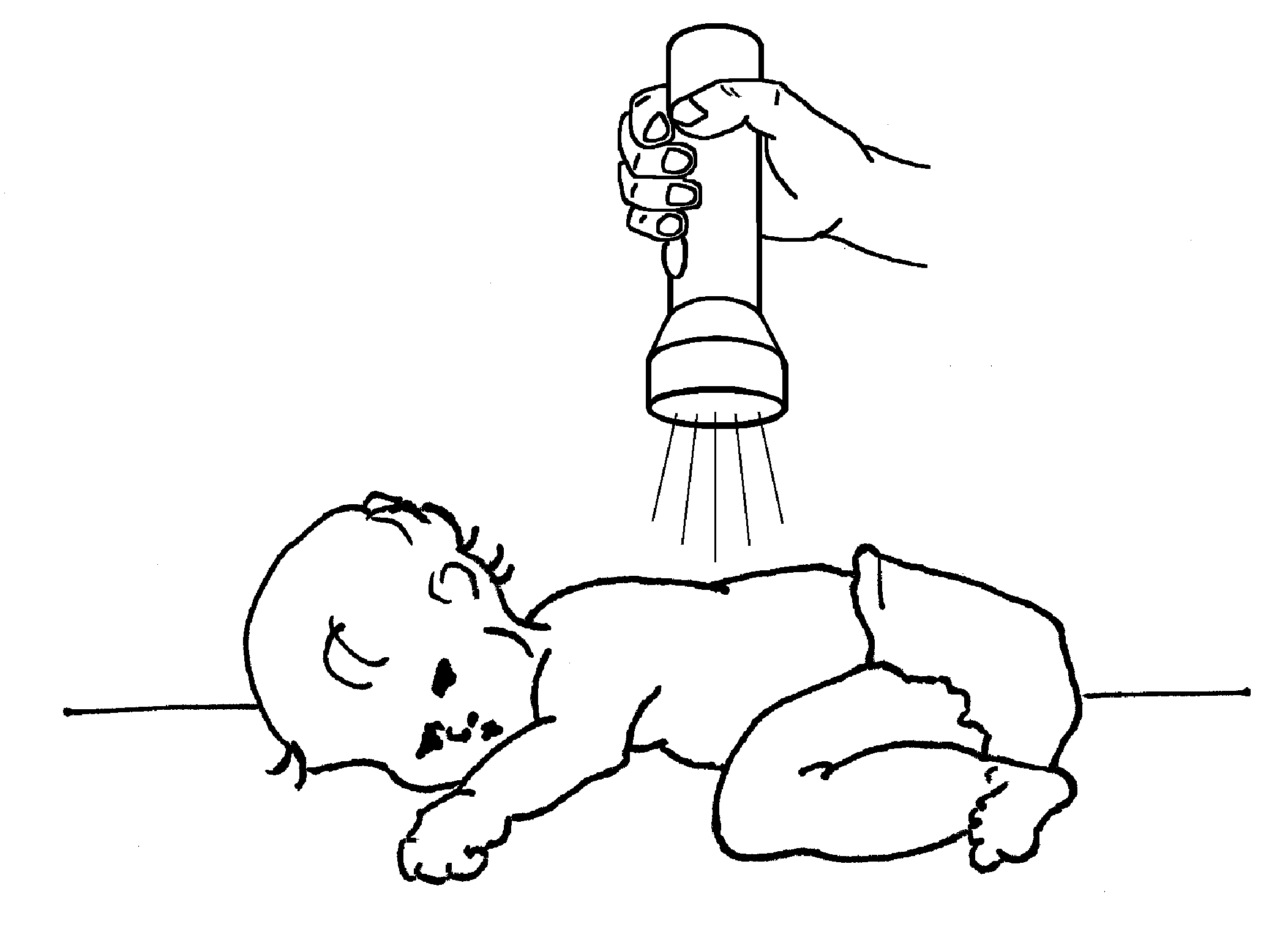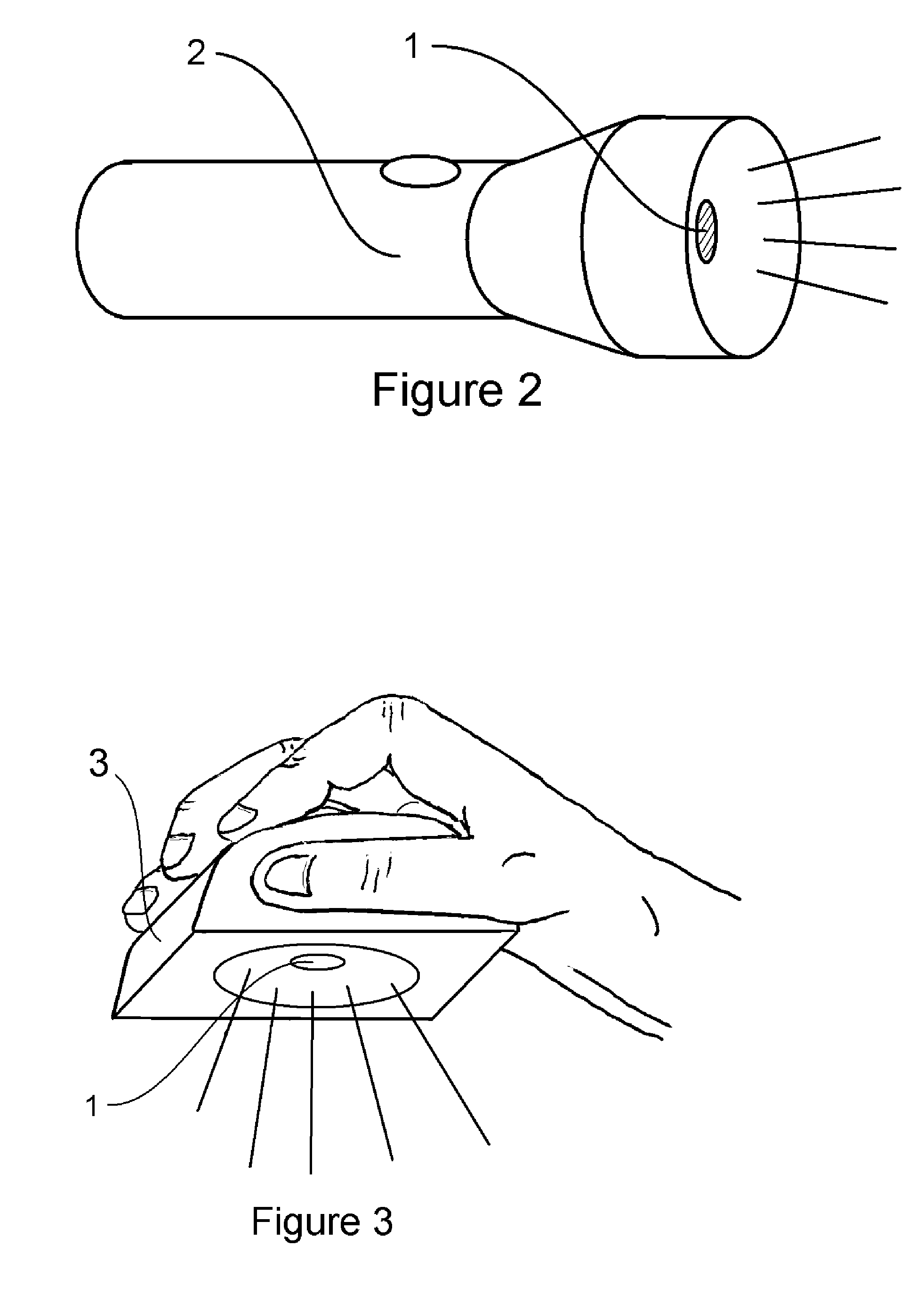Phototherapy Device for Treating Hyperbilirubinemia
a technology of bilirubinemia and phototherapy, which is applied in the field of jaundice phototherapy devices, can solve the problems of insufficient bilirubin levels for babies to justify the cost and inconvenience, and achieve the effects of bilirubin levels that are easily accessible, cost-effective, and easy to be treated
- Summary
- Abstract
- Description
- Claims
- Application Information
AI Technical Summary
Benefits of technology
Problems solved by technology
Method used
Image
Examples
Embodiment Construction
[0021] This invention is made by replacing the light bulb of a flashlight with one or more LEDs that emit blue light with a wavelength in the range of 400-500 nm. Appropriate electrical changes may be made in series with the power source to provide the appropriate voltage and current to power the LED(s). The changes in the power system will depend on the specifications of the particular LED used. Typical flashlight components, like various housing styles, reflectors, collimating optics, or lenses may be used. A high intensity light-emitting diode is required to treat hyperbilirubinemia. In practice any type of LED could be used as long as it gives off enough light. Luxeon® LEDs by Lumileds™ are one example of an LED that produces light with an adequate intensity.
[0022] The most common method for using this bilirubin flashlight will be to lift or remove a baby's clothing and then shine the light on the baby's exposed skin for as long as possible as shown in FIG. 4. This may be done ...
PUM
 Login to View More
Login to View More Abstract
Description
Claims
Application Information
 Login to View More
Login to View More - R&D
- Intellectual Property
- Life Sciences
- Materials
- Tech Scout
- Unparalleled Data Quality
- Higher Quality Content
- 60% Fewer Hallucinations
Browse by: Latest US Patents, China's latest patents, Technical Efficacy Thesaurus, Application Domain, Technology Topic, Popular Technical Reports.
© 2025 PatSnap. All rights reserved.Legal|Privacy policy|Modern Slavery Act Transparency Statement|Sitemap|About US| Contact US: help@patsnap.com



